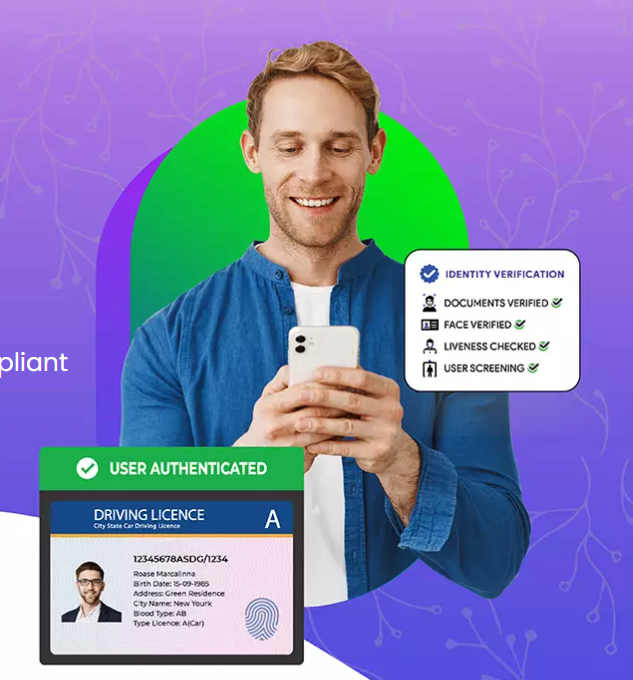In today’s digital world, where cyber threats and data breaches are rising rapidly, ensuring identity security has become a top priority for individuals and businesses alike. Traditional passwords and PINs are no longer sufficient to protect sensitive information. This is where face verification and voice biometric authentication come into play. These advanced technologies are revolutionizing identity verification by providing enhanced security, faster verification, and a seamless user experience.
What Is Face Verification?
Face verification is a biometric process that uses a person’s facial features to confirm their identity. It involves capturing a live image or video of a person’s face and comparing it with a previously stored photo or template. This technology relies on deep learning algorithms and artificial intelligence to analyze various facial attributes like distance between the eyes, jawline shape, and skin texture.
Face verification is widely used in industries such as banking, travel, e-commerce, and healthcare. For example, when you unlock your smartphone using your face or complete a KYC verification online, face verification technology ensures that the person is genuine and matches the registered user.
How Face Verification Works
-
Image Capture: The system captures a real-time image or video of the user.
-
Feature Extraction: It identifies and extracts unique facial features like the contours and structure of the face.
-
Comparison: The system compares the live image with the stored face data in the database.
-
Decision: Based on the match score, the system either verifies or rejects the user’s identity.
This entire process happens within seconds, making it both fast and highly secure.
Advantages of Face Verification
-
High Accuracy: AI-driven algorithms ensure reliable and precise results, reducing chances of false matches.
-
Contactless Verification: No need to touch sensors or input passwords, making it hygienic and convenient.
-
Enhanced Security: Difficult to forge or duplicate compared to traditional passwords.
-
Quick Onboarding: Ideal for businesses offering instant digital onboarding and remote KYC verification.
-
Fraud Prevention: Prevents identity theft and ensures that only authorized users gain access.
Face verification has become an essential tool in digital identity verification services, enhancing both security and user experience across sectors.
Understanding Voice Biometric Authentication
Voice biometric authentication is another cutting-edge technology that identifies individuals based on their unique voice patterns. Every person’s voice has distinct characteristics such as pitch, tone, rhythm, and speech dynamics. Voice biometrics captures these vocal features to create a unique “voiceprint” for each user, similar to a fingerprint.
When a user speaks into a device, the system analyzes the live voice sample and compares it with the stored voiceprint. If the match is successful, access is granted. This process is secure, fast, and ideal for remote identity verification.
How Voice Biometric Authentication Works
-
Voice Enrollment: The user’s voice is recorded and converted into a digital voiceprint.
-
Feature Extraction: Unique vocal features are extracted and stored securely.
-
Authentication: During verification, the user speaks a phrase or sentence.
-
Matching: The system compares the live voice sample with the stored voiceprint.
-
Result: If the match is accurate, access is granted immediately.
Voice biometrics is commonly used in banking, call centers, telecom services, and smart home systems.
Benefits of Voice Biometric Authentication
-
Strong Security: Voice patterns are extremely hard to replicate, ensuring high protection.
-
Frictionless Experience: Users simply speak to verify themselves—no need to remember passwords.
-
Remote Verification: Works effectively over phone calls and mobile apps.
-
Cost-Effective: Reduces dependency on OTPs and manual verification.
-
Multi-Layered Authentication: Can be combined with face or fingerprint verification for maximum security.
With increasing adoption of voice biometric authentication systems, organizations are achieving stronger identity management and improving customer satisfaction.
Why Combining Face and Voice Verification Matters
While both technologies are powerful individually, combining face verification and voice biometric authentication creates a multi-layered identity verification process. This hybrid approach ensures maximum security against spoofing, deepfake attacks, and identity fraud.
For instance, a banking application can ask the user to verify their face and then confirm their voice for final access. This dual verification method significantly reduces the risk of unauthorized access while keeping the process user-friendly.
Applications Across Industries
-
Banking & Finance: Used for eKYC, secure transactions, and fraud prevention.
-
Telecommunications: Enables customer authentication during support calls.
-
Healthcare: Protects patient data and ensures authorized access to records.
-
Travel & Hospitality: Simplifies check-ins and border control through contactless verification.
-
E-commerce: Ensures genuine user verification during online purchases and account sign-ups.
These technologies not only enhance security but also build trust and transparency between businesses and their customers.
The Future of Biometric Authentication
As cybercriminals adopt more sophisticated methods, biometric authentication continues to evolve. Future advancements in AI and machine learning will make face verification and voice biometrics even more accurate, secure, and resistant to spoofing. With continuous innovation, biometric authentication is expected to become the global standard for digital identity verification.
Moreover, integrating these technologies with blockchain and cloud-based identity management systems will further enhance security and streamline the verification process across multiple platforms.
Conclusion
Face verification and voice biometric authentication are redefining the landscape of digital security. Their ability to offer accurate, fast, and user-friendly verification makes them indispensable for modern businesses and government agencies. As more organizations adopt these technologies, users can expect a safer and smoother online experience.
In a world where digital identity protection is crucial, biometric authentication isn’t just an option—it’s the future of secure identity verification.



